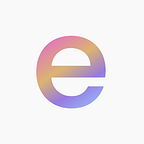The Periodic Table Re-Imagined
Facts of Matter — An augmented reality app that lets you discover the foundations of everything.
For a project in university we had to redesign the periodic table. At first I wasn’t looking forward to this project as science is not my best subject. However, as I started coming up with innovative ideas I realized that there is exciting ways to transform how we can learn about the elements which surround us.
I decided that for my redesign of the periodic table, I am going to create an augmented reality experience. No matter where my user is they can use their smartphone and use my app to scan objects and see what elements lie within.
The target audience for this product will be mainly students. My reasoning for students is because I think children would prefer a more illustrated/characterised app, whereas this app is all about real life. I think students would engage really well with this product due to many owning smartphones that they carry everywhere, therefore this is more practical for them.
Research
I began by carrying out research into augmented reality as this is something I haven’t previously designed for. I began to learn about the patterns AR apps have such as instructions on how to use the app and what to do with your camera. This is something I recognised as important and that needed to be included in my app to aid the user.
Beginning to Design
I decided to use the image below for my app mockups. I choose this image because there is lots of different objects and therefore there will be so many different elements. There are hundreds of elements around us, therefore when my app is scanning a large area like the image below, it will pinpoint only two or three elements that are largest. If you want more detail on specific areas you can take your camera to one specific object and it can bring up more elements to do with it. I did some research into the different elements which can be found in a tree, metal stairs and cement. The results can be seen below:
Tree — 98% Carbon, hydrogen, oxygen, nitrogen, phosphorus and sulfur.
Metal Stairs — Aluminium, Iron.
Cement — Calcium, silicon, aluminum, oxygen, and iron.
Sketches
I want my app to minimalistic and clear. With my AR experience there will be pop-up call to action buttons when your walking around. These actions will popup when an element is discovered and you can click on them to find out more information.
Wireframes
My app will consist of 5 main types of pages. We have the home page, beginners guide, loading page, elements radar and facts page.
Colours and Font
I wanted to use colours for my app that represent science yet look professional and would attract a young audience. With students notebooks being coloured ‘blue’ for chemistry, I thought blue would be most fitting. I am going to use blue as my main colour on my app. Below is some inspiration for my app design and brand colours.
For the majority of my content I needed a font that had clarity yet still looked technological. Roboto is a geometric font that is also friendly and natural. I am going to use this for the majority of my text.
Branding
I created several iterations of my logo and ended up choosing two different styles depending on contrast against the background. You can see my chosen style son the app store image on the left.
Mockups
Final Mockups and Prototype
After carrying out the processes above, below is a working prototype of facts of matter. Enjoy!
